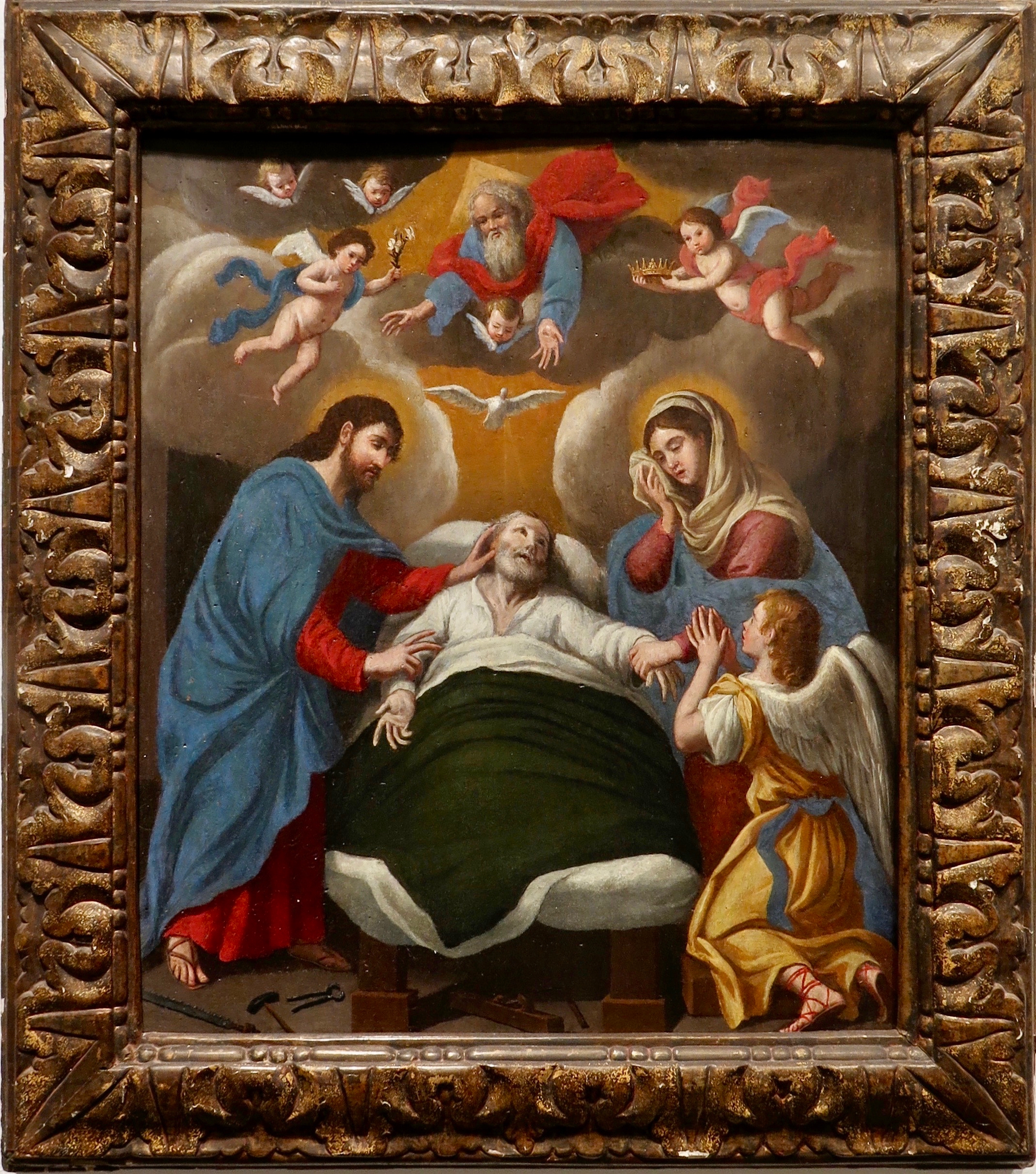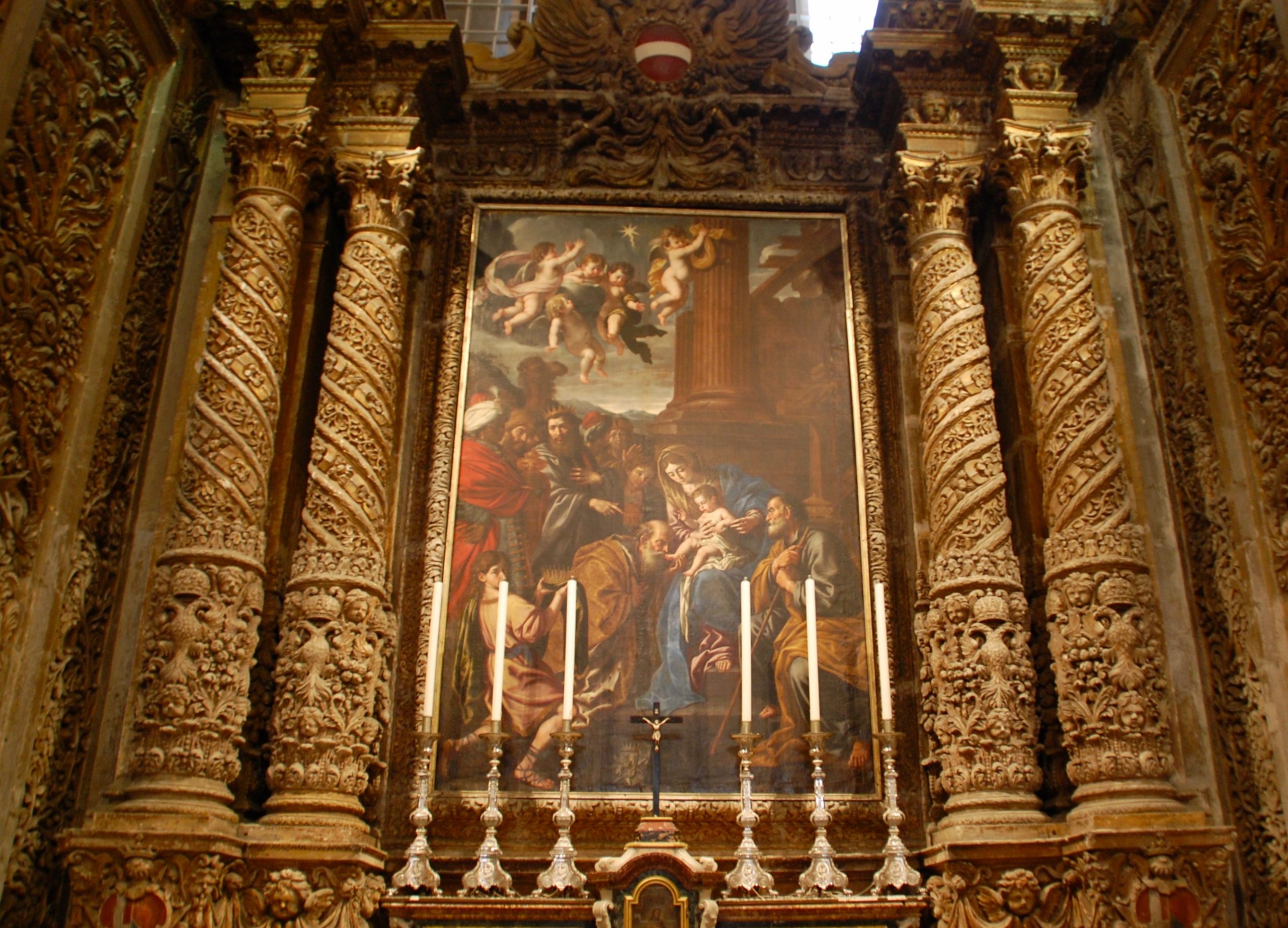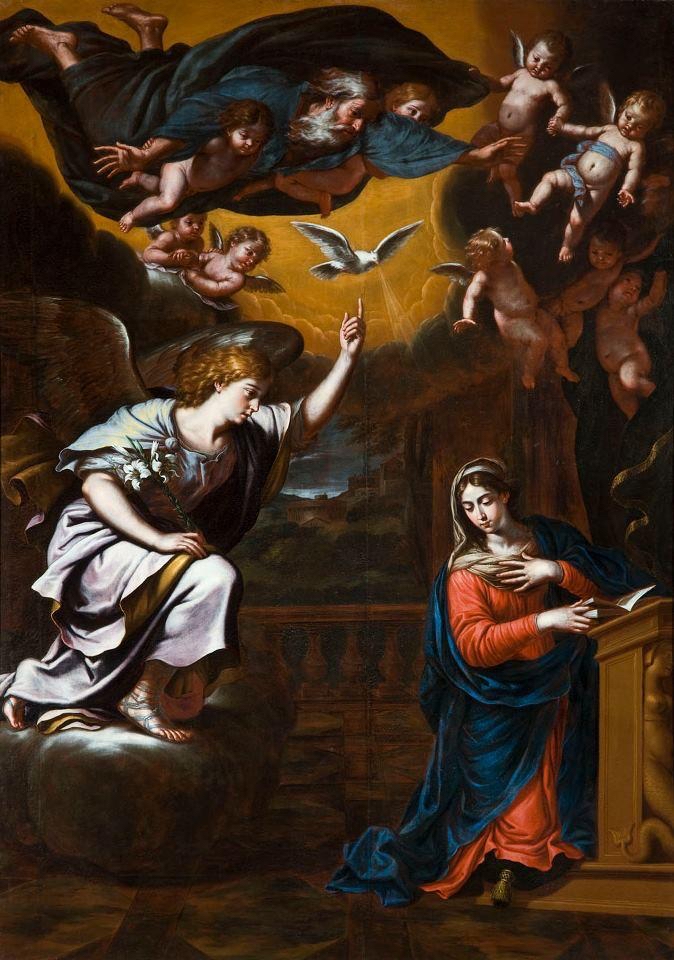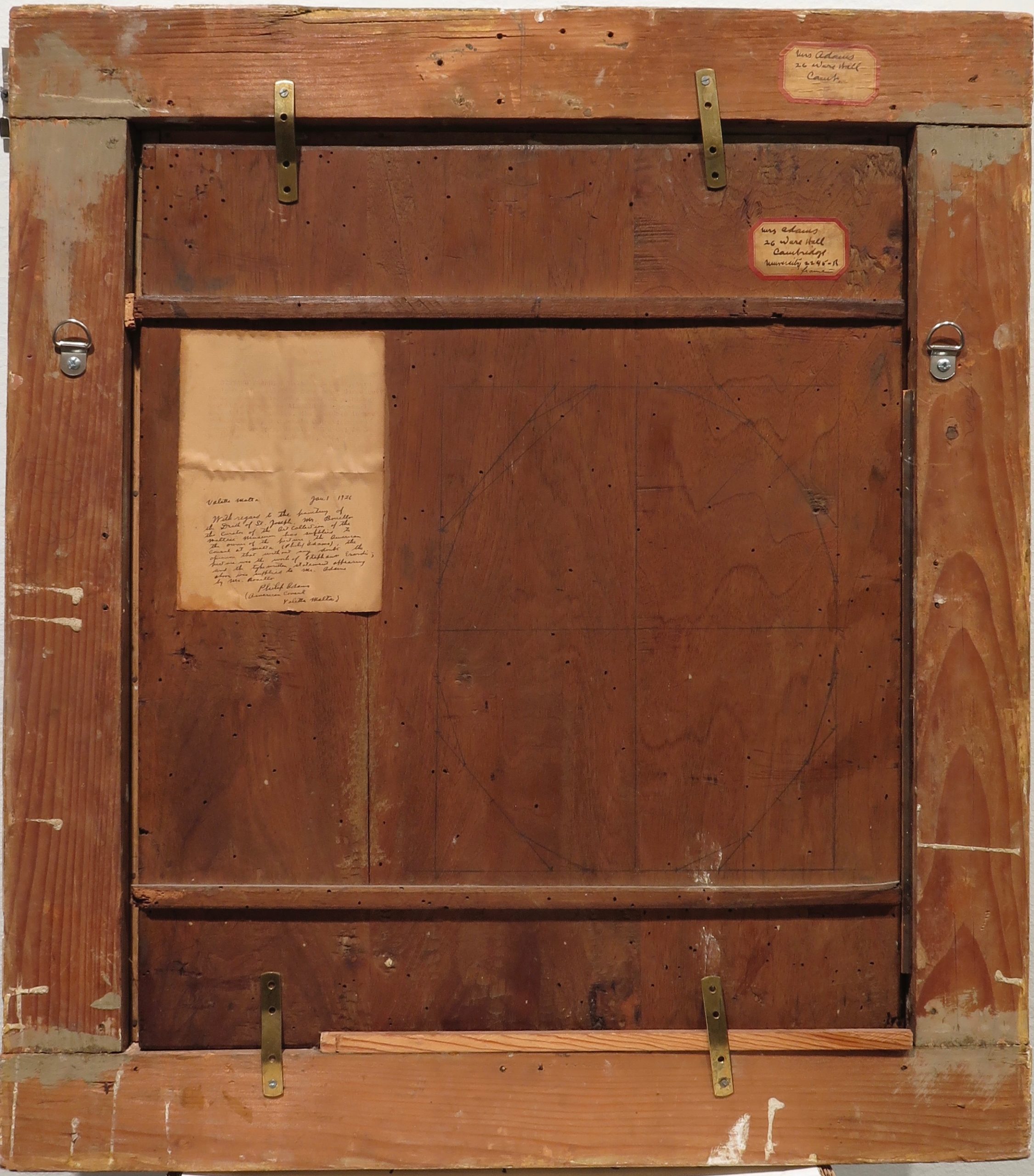
As we crawl our way through the second year of the Covid-19 pandemic, I find myself returning to this moving painting in the collection of the Cantor Art Gallery. The scene represented is the Death of Saint Joseph, the fatherly saint’s identity is confirmed by the carpentry tools scattered on the ground by his bed. Attending at Joseph’s bedside are Mary, Jesus, and an angel in prayer; they are joined by a small host of angels in heaven. While one angel holds lilies, another awaits with a crown – both symbols of Joseph’s impending transition to saintly status. In this scene of extreme unction – the sacrament meant to prepare the soul for death – the gift of the Holy Spirit is sent by God the Father. In Catholic tradition, this gift is meant to renew faith in God and strengthen its recipient against the temptations of discouragement and despair that accompany the fear of dying, thus preventing the loss of hope in God’s salvation. For me, the image of people gathered at a loved one’s bedside at the moment of death has taken on new weight during the pandemic. For those of us who were denied access to our parents, relatives, and friends as they passed (in my case, my beloved father), the image reminds us of the universal desire to bear witness and provide comfort in this final transition. At Joseph’s bedside, Jesus (as priest) performs the sacrament of extreme unction, while Mary, as intercessor, serves as a perfect representation of somber, yet hopeful, Christian grief.
This small panel painting is most likely the work of Stefano Erardi – a Maltese painter of the late-17th, early-18th century. Born in the city of Valletta in 1630, Erardi painted in the Baroque style that was popular throughout Europe at the time. This style is marked by dramatic positioning of figures, heightened attention to the temporal aspect of a narrative, and deep, rich colors. One of the greatest painters of the Baroque period, Caravaggio (d. 1610), is known to have lived in Malta for a brief period of time toward the end of his life. Though Stefano Erardi is not well-known outside of Malta, he was favored by government and church authorities on the island, and his paintings can be found throughout churches and collections on Malta and nearby Gozo. Some of his most well-known paintings are large-scale altarpieces, such as the 1667 painting of the Adoration of the Magi, still in situ at Valletta’s Co-Cathedral of Saint John (it shares the title with the Co-Cathedral of Saint Paul in Mdina). It is worth noting that Malta suffered an intense outbreak of the plague from 1675 -76, in which Erardi would have seen approximately 11,300 Maltese citizens die.

The Death of Saint Joseph was given to the Cantor Gallery by Martin O’Malley, a Worcester native and 1964 alumnus of Holy Cross. For many reasons — storage, care, and teaching being among them — the Gallery’s task is first to confirm its attribution: how do we know that this painting is by Erardi, especially considering that it has not been signed by the Maltese artist (keeping in mind that a signature is not always a guarantee for authentic authorship)? Often attribution lies in a complex network of clues.
The most important tool we use in determining authorship is our eyes. Does the painting look like others painted by Stefano Erardi? Since there are many affirmed Erardi paintings in Malta, we can look to comparisons to see that the Cantor’s Death of Joseph accords with known examples: one of the most famous of Erardi’s paintings, still installed in Saint John’s Co-Cathedral in Valletta, is the Adoration of the Magi, painted in 1667. Though the Adoration of the Magi is a much larger and more developed painting than the Death of Saint Joseph, we can see several similarities between the two: including the palette of rich blues, reds, and mustard-gold yellows. Also similar is the concentration of figures in the close middle ground, and especially the proportions and positioning of the youth/angel figure represented in the foreground of both paintings.

Erardi’s painting of the Annunciation, currently located in the Carmelite Priory in Mdina, Malta, dated to 1677, also demonstrates the saturated palette utilized by Erardi throughout his paintings. The Annunciation also connects to the Death of Saint Joseph through the translucent golden mustard color that the artist uses in the sky around the God the Father figure, the silvery-white outlines of the clouds, and the descending dove (representing the Holy Spirit) with light streaming from its beak — all characteristics of both paintings.

In addition to these visual similarities, the Joseph panel importantly carries with it the opinion of a Stefano Erardi expert, who confirms the attribution in a note pasted to the back of the panel:

Valetta Malta Jan 1 1926
With regard to the painting of the Death of Saint Joseph, Mr. Bonello, the Curator of the Art Collection of the Maltese Museum has supplied to the owner of the picture, the American Consul at Malta (Philip Adams), the opinion that without any doubt the picture was the work of Stephano Erardi; and the typewritten statement appearing above was supplied to Mr. Adams by Mr. Bonello.
Philip Adams (American Consul Valetta Malta)
In this note, Mr. Bonello, who we can assume has examined most Erardi paintings, not only confirms Stefano Erardi as the artist, but it also creates a provenance for the painting. He illuminates the way in which it traveled from Malta to the United States — in the hands of an American diplomat. For art collections and museums, it is important to demonstrate that the painting was legally purchased, in accordance with international laws about moving works of art out of their country of origin. For the Cantor, an Erardi attribution allows us to create a storage, care, display, and research plan that responds the painting’s 17th century date, and Maltese origin.
For modern viewers, the scene of Joseph’s deathbed is an important reminder of the humanity that defines the lives of the saints. Joseph’s role as a loving father has been recently highlighted through the Pope’s proclamation that 2021 be a special “Year of St. Joseph.” The Pope’s Patris corde (with a father’s heart) letter, written against the backdrop of the Covid-19 pandemic, relates Joseph to the “ordinary people” who have persevered and helped one another, offered hope, and thus played an important role in the history of salvation. The Cantor Collection’s painting, perhaps painted around the time of Malta’s plague outbreak, connects us with these larger ideas of health and care that are fundamental human values — here to be considered and emulated through the contemplation of a transcendent work of art.
Meredith Fluke, Director of the Cantor Art Gallery
